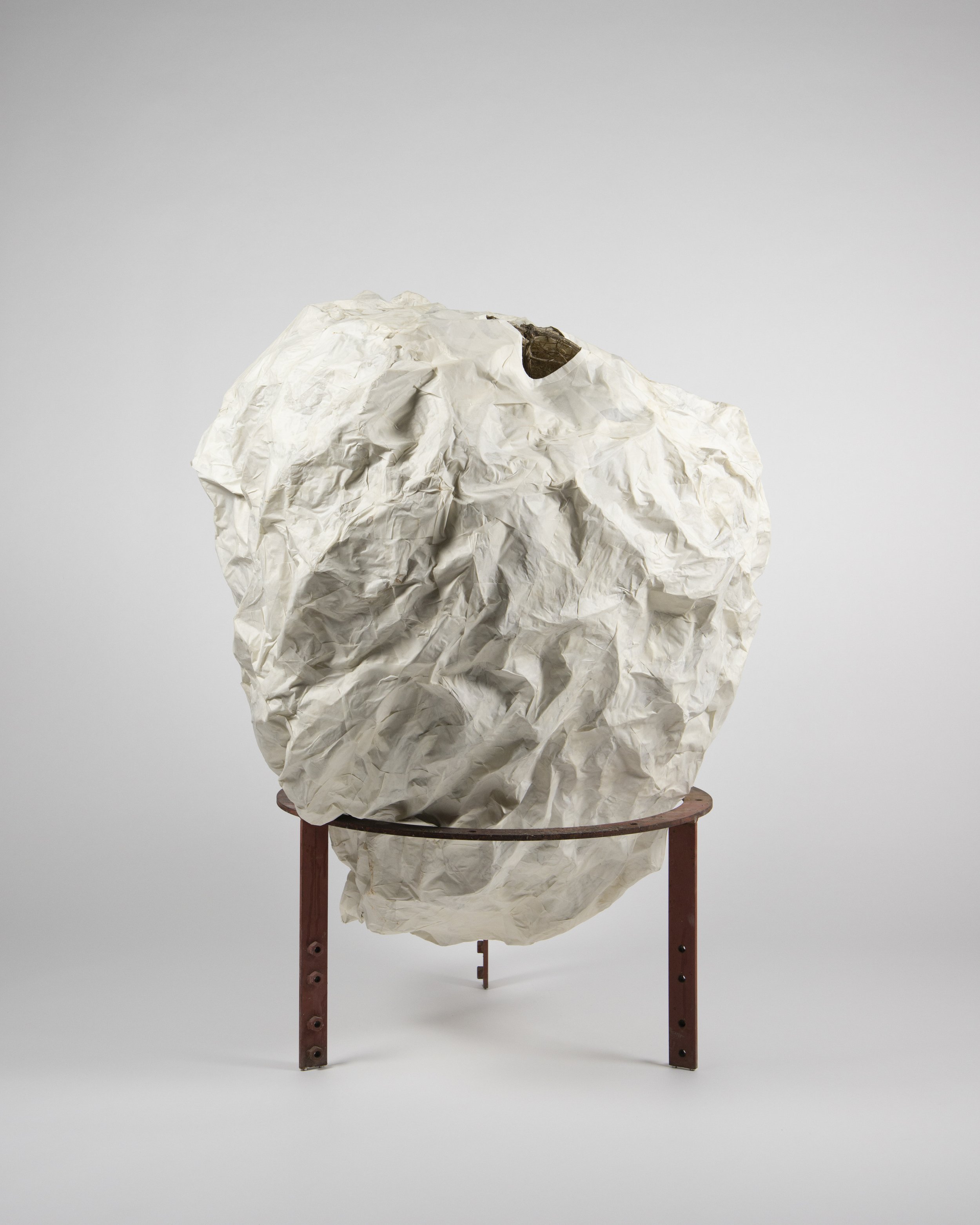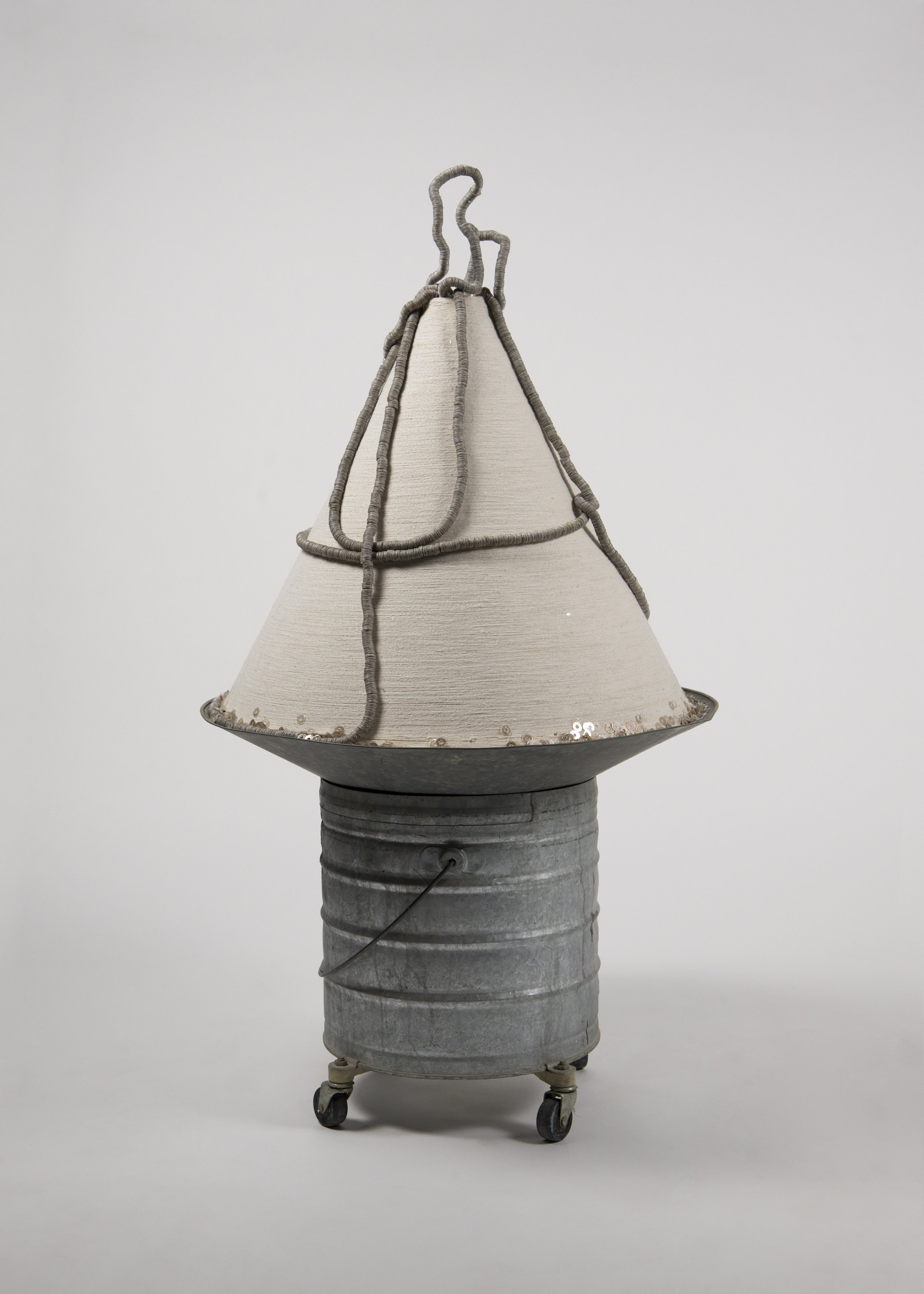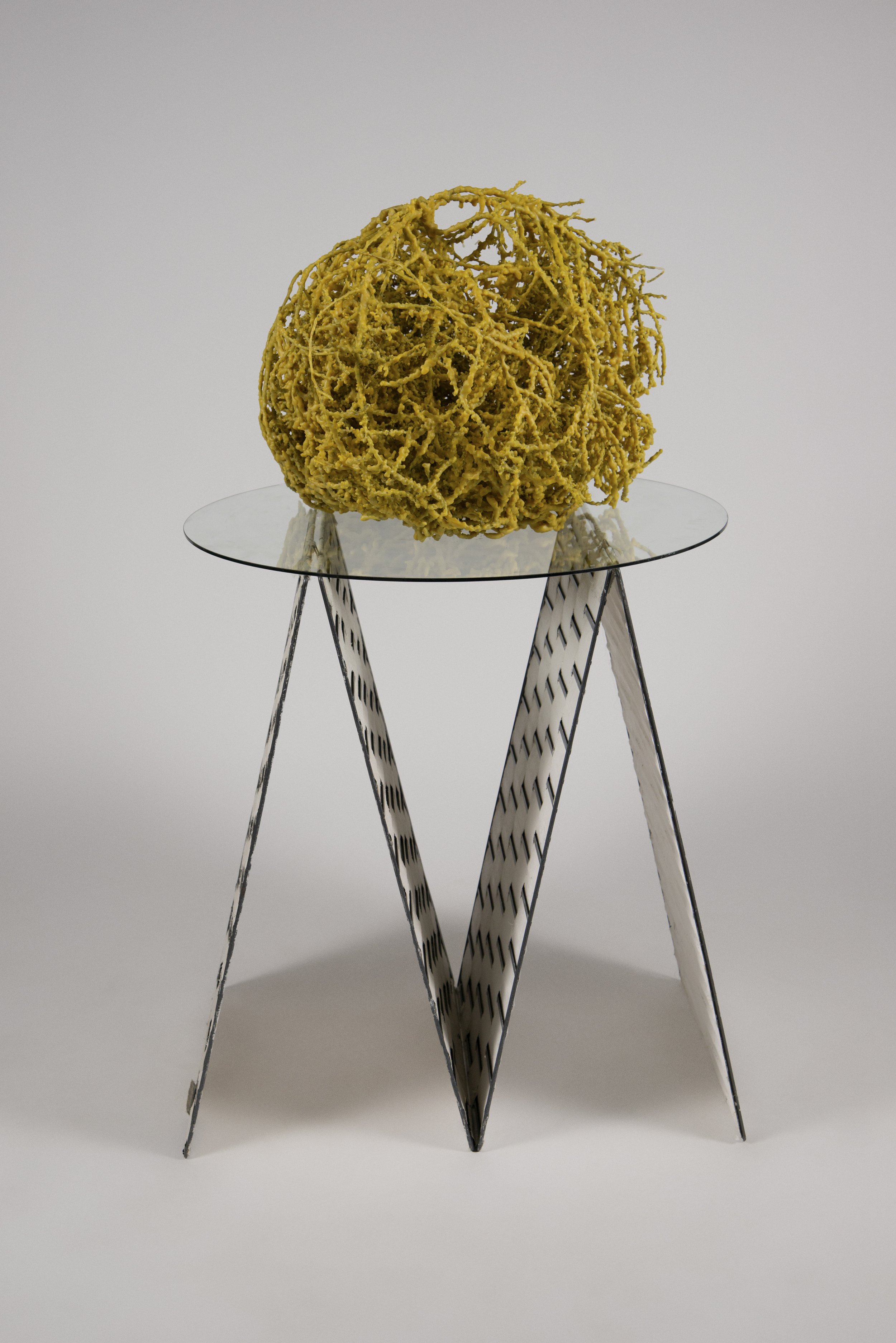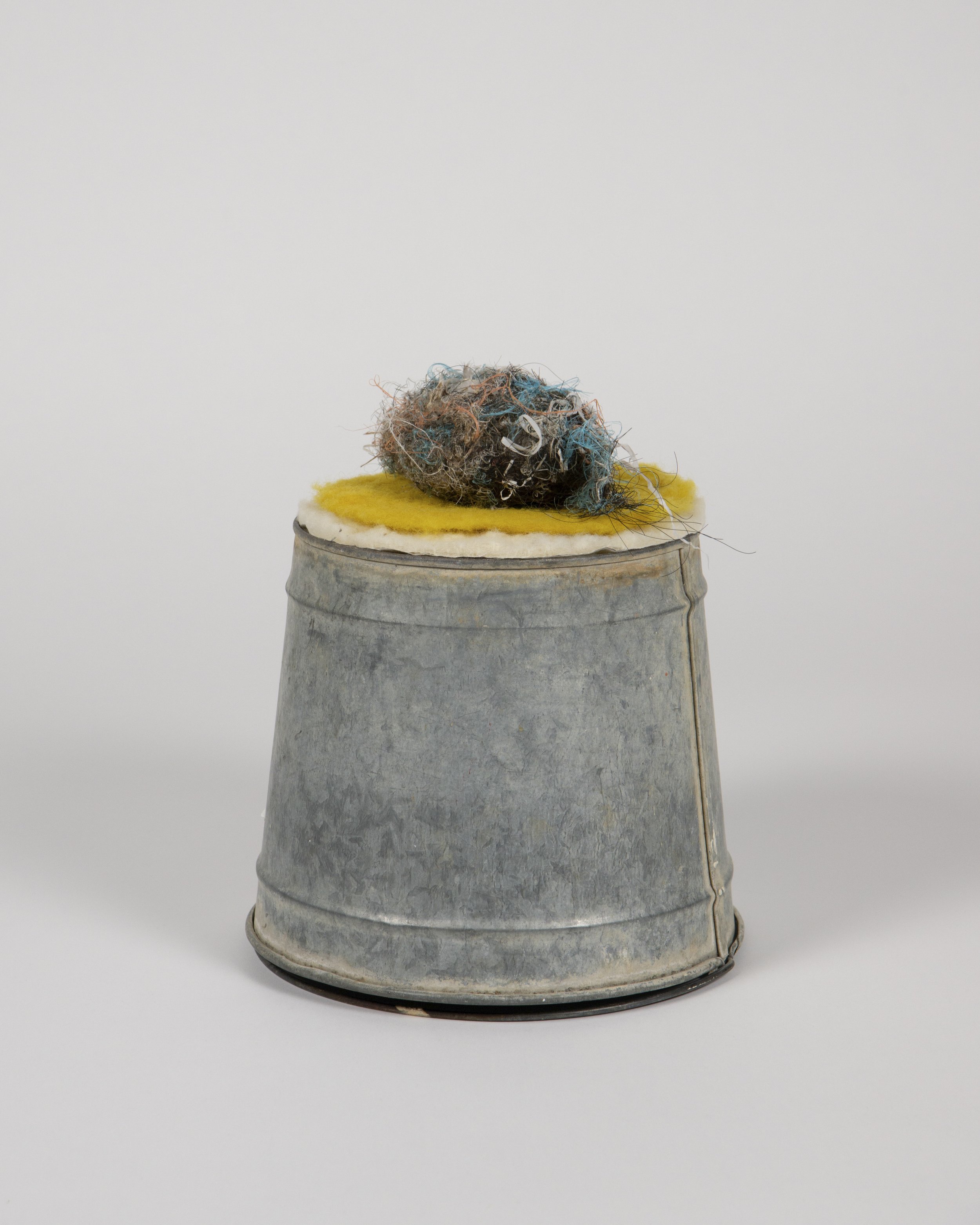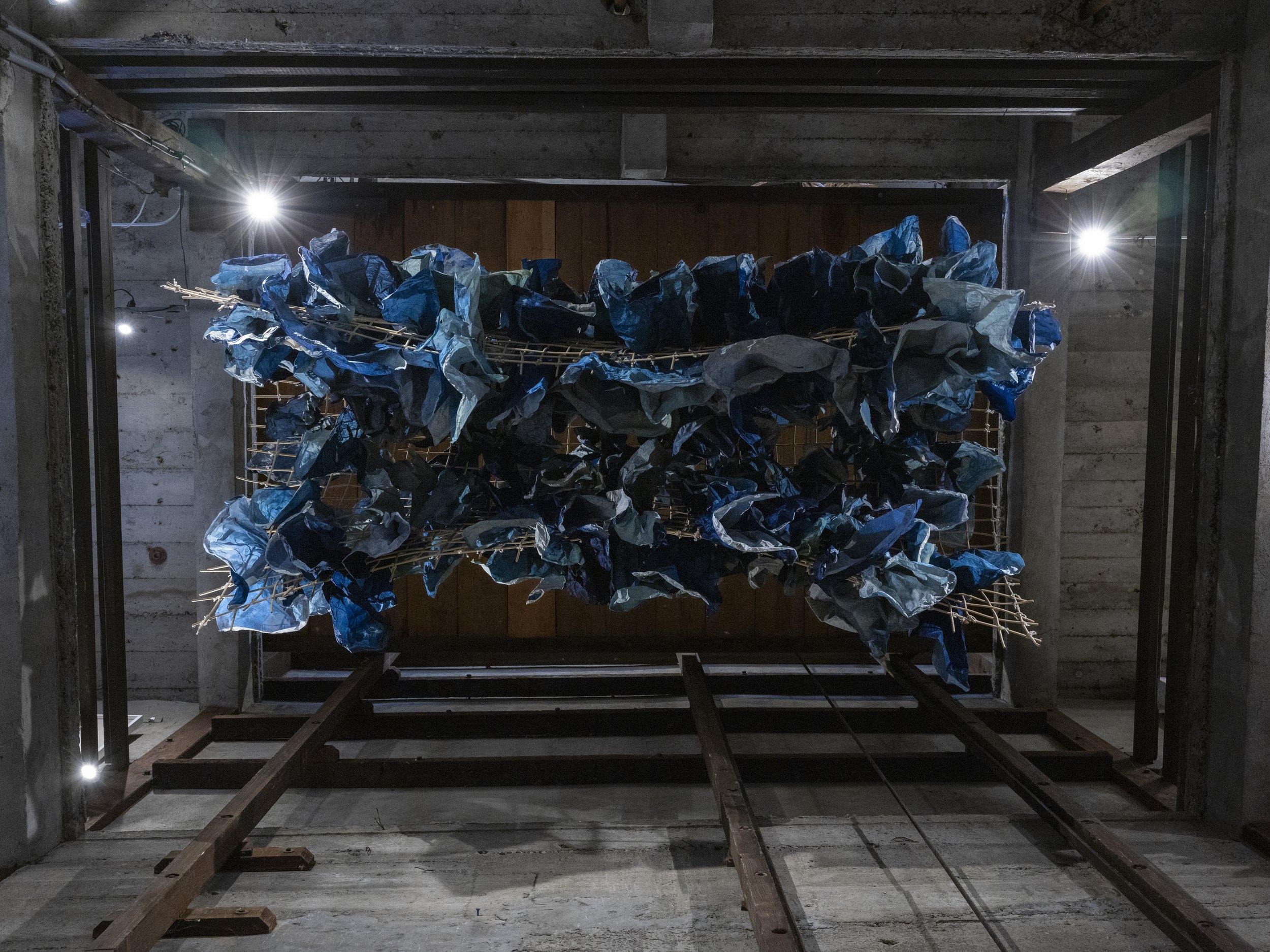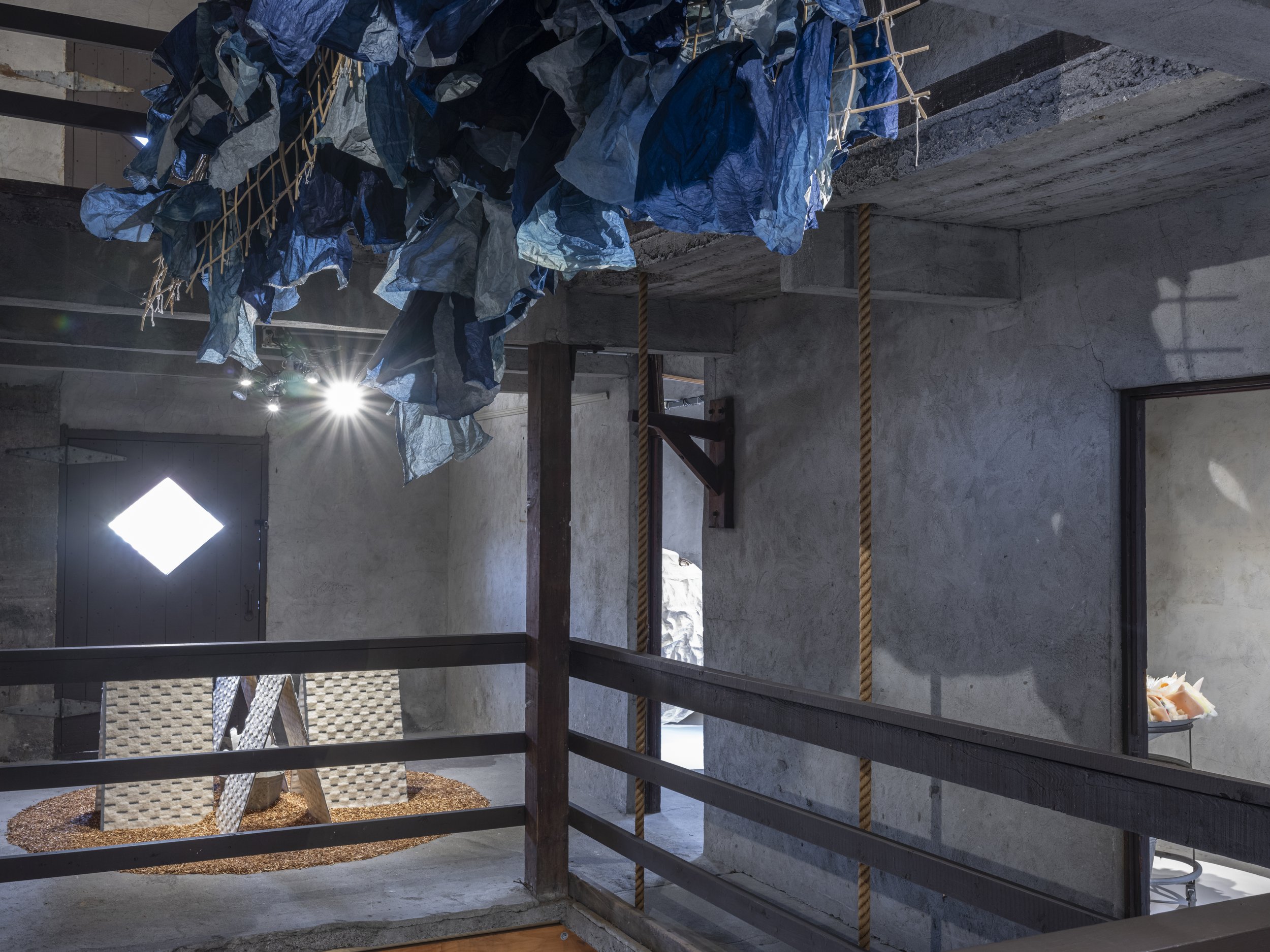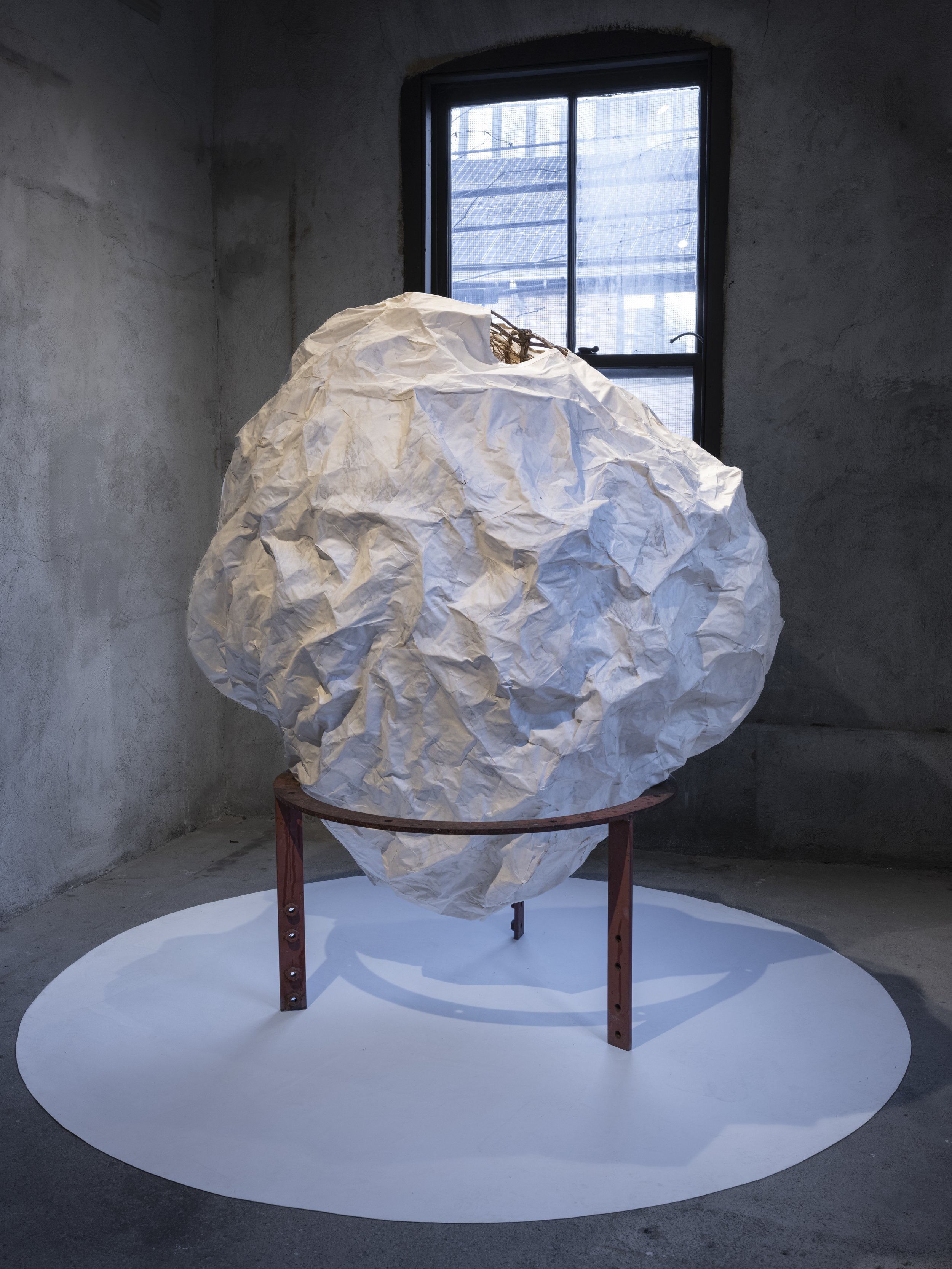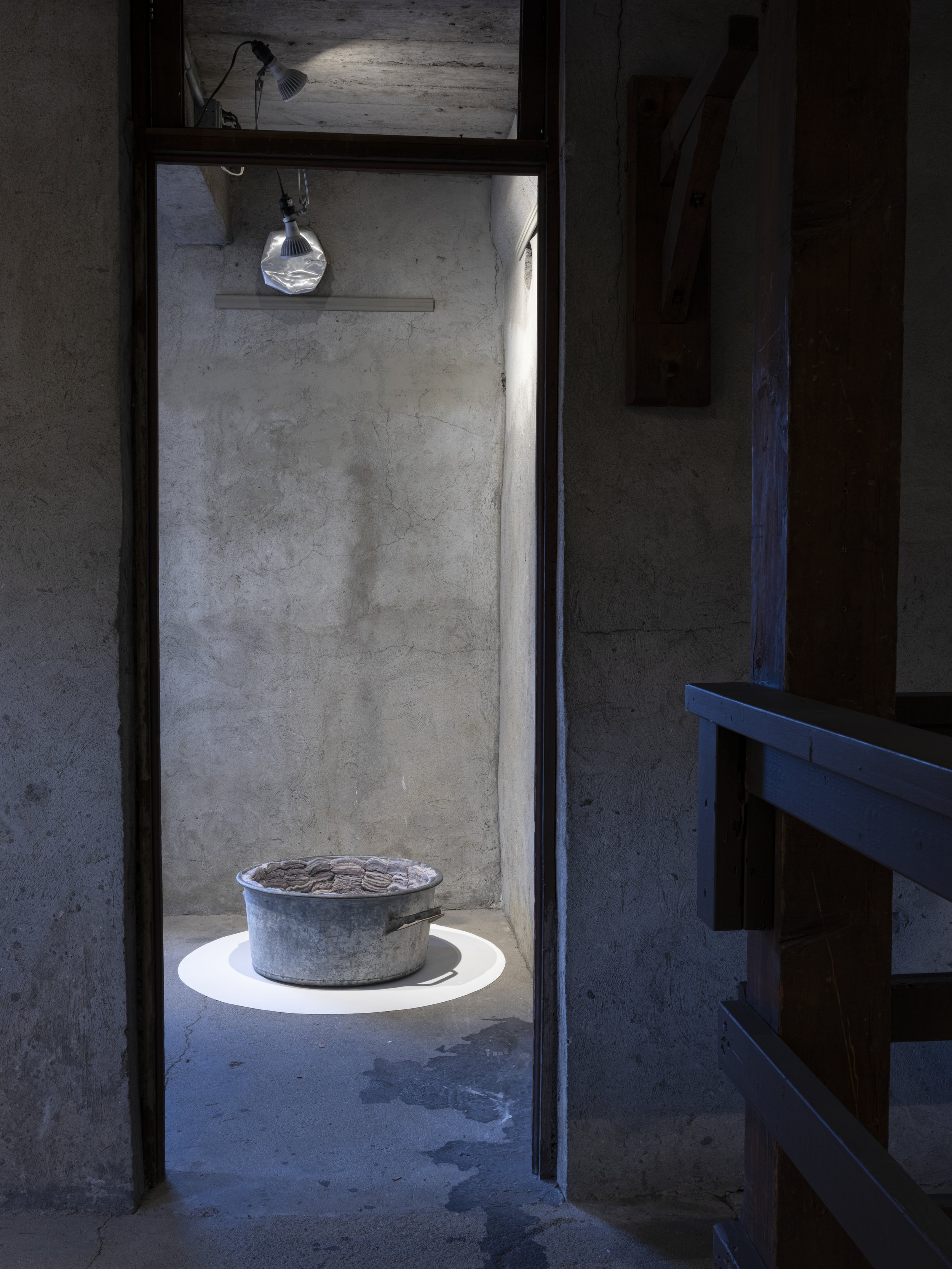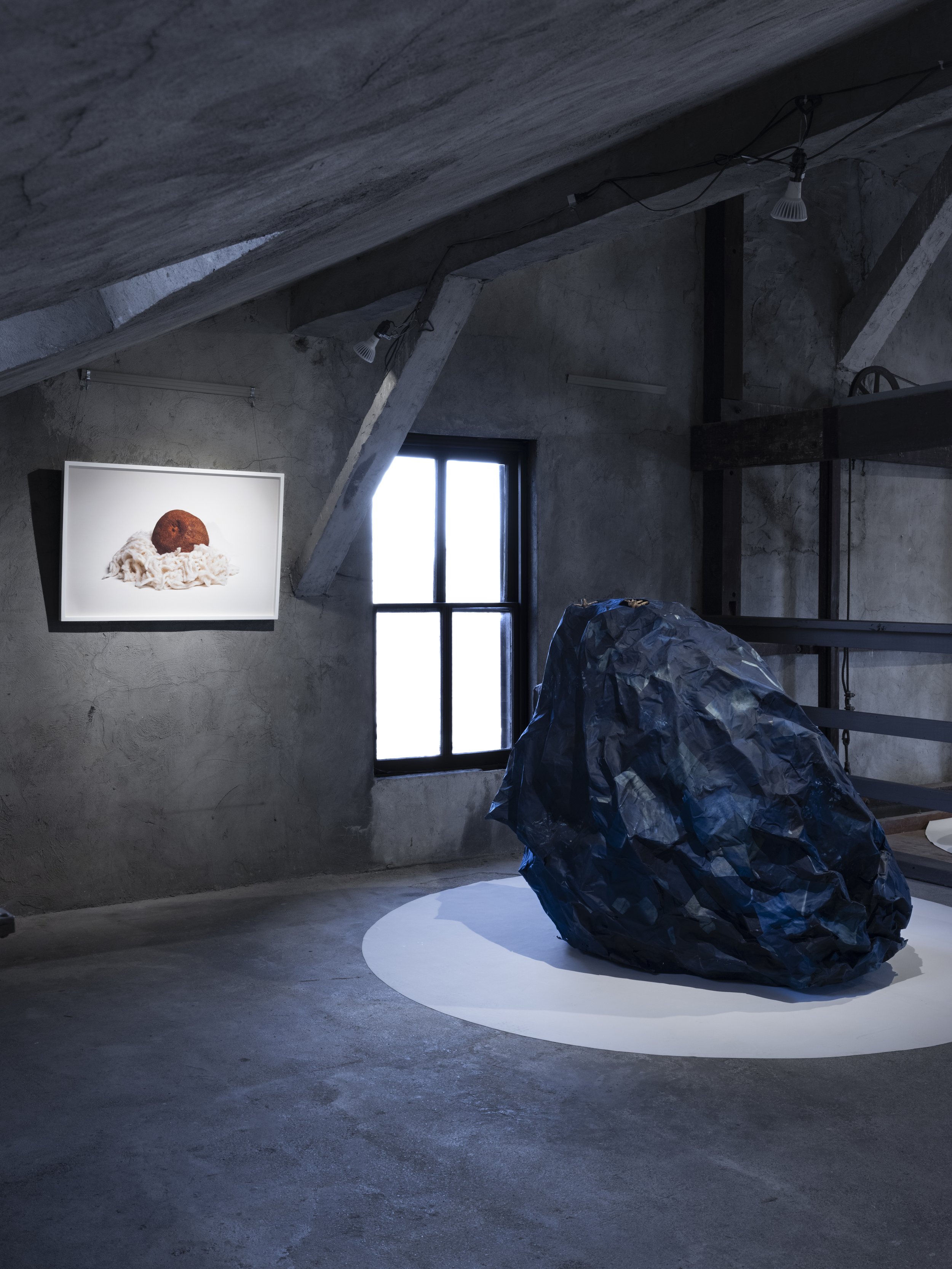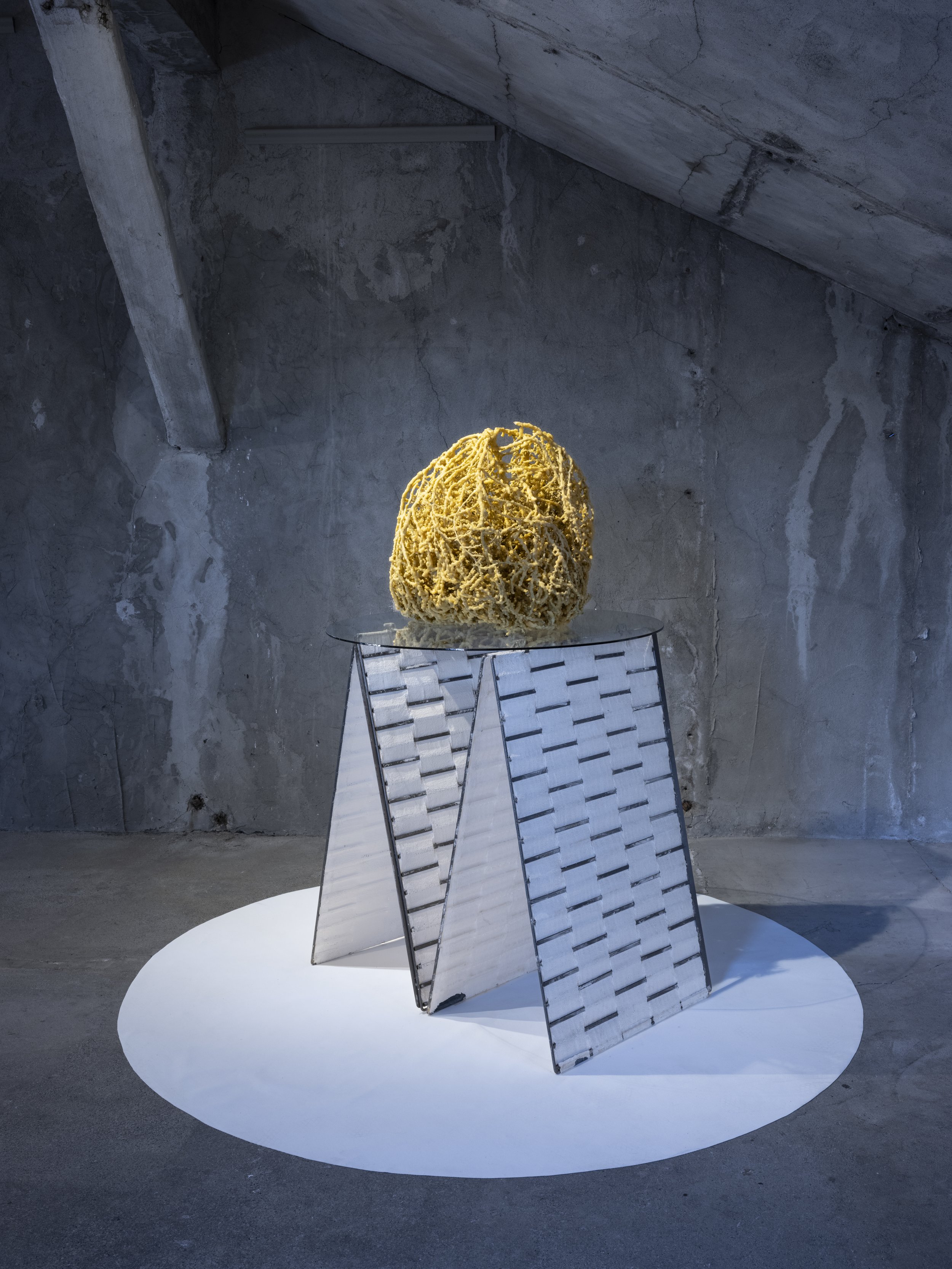Robin Hill: All That You Touch
November 11, 2023 - January 20, 2024
Pamela Salisbury Gallery
Carriage House installation (3 floors)
Hudson, NY
All That You Touch catalog
“Robin Hill: "All That You Touch," in Pamela Salisbury Gallery's Carriage House amounts to an informal mid-career survey for the California-based artist and professor of art at UC-Davis. The catalog accompanying the show includes a thoughtful essay by poet Iris Cushing, who offers that Hill's art is, at its core, one of finding things. She "weaves together threads she finds floating in her environment," and goes on to describe how Hill "collects, arranges, adds, composes, and constructs" the tenderly installed objects on view.
"Nest 2," 2023 is a stacking of beeswax forms emerging from a cloud of cotton batting. Cast beeswax vessel shapes support an upturned galvanized bucket, on top of which a circle of more beeswax forms is surmounted by a found oriole's nest. In the small room where the work is placed, textures, origins, natural forces, and construction comprise a situation where everything matters.
A comparable interplay characterizes most of the art here, especially the gracefully looming “Understory,” 2023, suspended in the Carriage House's former elevator shaft. Whether seen from beneath or above, this artifact/cloud/apparatus seems to shadow the more discrete objects on the surrounding floors.”
Buzz Spector, 2023
Pamela Salisbury Gallery
Carriage House
Hudson, NY
excerpt from catalog essay by Iris Cushing:
Underlying these and so many other material elements in All That You Touch is the invisible question of the artist’s will. I see Hill as an artist who, in the lineage of artists working with non-intentional or aleatory means of making, approaches objects not as vehicles of self-expression, but in a way that reveals what’s most expressive about the objects themselves. “Trees, stones, water, everything is expressive,” John Cage wrote in a letter to musicologist Paul Henry Lang. “I see this situation in which we live as a complex interpenetration of centers moving out in all directions without impasse.” Recognizing the world as a “complex interpenetration of centers,” Hill is an artist working in service of the expressiveness of the things she touches. Her work allows for the fullness of that expression, whether what’s expressed is endurance, tenderness, or sorrow (as in Wildfire Remnant, a piece of a tree blackened in California’s recent wildfires). A recuperation of care for what is overlooked is Hill’s special purview, and these pieces are homes—nests—for that care. I return to the small oriole nest with its woven fibers. While Bullock’s orioles inhabit the western half of the US, Baltimore orioles migrate throughout the eastern half; I see their brilliant streaks of orange occasionally in the birch trees where I live in upstate New York. They rarely intermingle with each other, but both species of bird fashion these cup-shaped nests from bits of found material. It so happens I grew up in Woodland, home of Hill’s studio (and house, family) — considering the Bullock’s oriole nest, the small piece of space it delineates, I perceive it as a site for my own personal sense of home. Even as it acts as a symbol for home, rest, care, it is vividly itself. In The Poetics of Space, Gaston Bachelard writes of nests:
A nest, like any other image of rest and quiet, is immediately associated with the image of a simple house. When we pass from the image of a nest to the image of a house, and vice versa, it can only be in an atmosphere of simplicity… For the painter, it is probably twice as interesting if, while painting a nest, he dreams of a cottage and, while painting a cottage, he dreams of a nest. It is as though one dreamed twice, in two registers, when one dreams of an image cluster such as this. For the simplest image is doubled; it is itself and something else than itself. ³
As an artist at work, Hill certainly dreams in the multiple registers Bachelard describes. Beginning with the activity of finding, she transforms the pieces seen in this exhibition through phenomenological significance and, ultimately, back into themselves. The self-nature expressed through each work is entirely its own; the artist’s revelation of each thing’s integrity becomes her integrity, too.
³ Gaston Bachelard, Maria Jolas (trans.) The Politics of Space (Boston: Beacon Press, 1958), p. 98
catalog images: Nicole Rico
installation images: Jordan Benton


